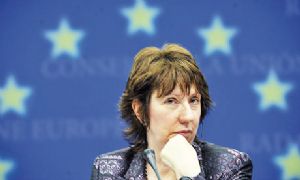As Italy
begins its celebration of 150 years of unification, Tuscans recognize this
anniversary as a significant milestone for the region, but especially for
Florence. Although Tuscany and Florence are known as being the heart of the
Italian Renaissance, with Dante and the Medicis calling Florence home, the
unification of Italy also owes special tribute to the city of Florence, which,
from 1865 to 1871, served as the second capital of the then newly united
nation.
After
the unification of Italy in 1861, when Rome was still under the control of the
Papal States, Turin was declared the first capital of Italy, as it was then the
capital of the Piedmont region and home of ruling the monarchs, the Savoy.
However, Turin soon became vulnerable to French control because of its location
in the northwest. Meanwhile, Victor Emanuel II, the King of Piedmont, Savoy and
Sardinia, hoped to acquire the Papal States.
Napoleon
III entered into an agreement with the Italian Kingdom that contained a secret
clause that endorsed the transfer of the seat of the Italian government from
Turin to Florence. As the news broke, serious and fatal rioting erupted in
Turin. Although the Piedmontese were unhappy with the change, Florentines
embraced the selection of their city as the capital, though only temporarily.
The
limited information on the political implications and reasons for the selection
of Florence as the capital of Italy leads to varying opinions about the choice
and factors involved in the move. The main reason, however, seems to be its
central location. Turin was too far from the southern regions of Italy, and
leaders worried that it could lead to their alienation.
The
Florentine dialect was also a major factor in the selection of Florence as
Italy’s capital. More specifically, Florentine was considered the ‘true
Italian’ at that time and was the dialect that leaders and other elites
preferred to unify the state linguistically. Dante used the Florentine
vernacular in all of his works because it was the language that he knew and
cherished, and the language the masses could understand. Also, the city’s rich
history of art, music, architecture and literature made it a natural center for
the newly formed government.
Florence
thrived in its six years as Italy’s capital city. However, its status as
capital led to a drastic population increase, which then caused the necessary
adjustment of the urban structure. New quarters had to be built to accommodate
the influx of people. Many of these areas were built in the north of the city.
We have the Risorgimento to thank for the breathtaking views of the city from
Piazzale Michelangelo and the Viale dei Colli, both constructed during this
period.
Many
edifices that still stand today served as major government buildings during
Florence’s brief reign as capital. The most important of these was Palazzo
Vecchio, which housed the second Italian Parliament after its unification. It
was also home to the Italian Foreign Ministry. Florence’s tenure as capital
city ended in 1871, when the capital moved to Rome, where it currently stands.
The
decision to move the capital to Rome was clear following the move out of Turin.
Political leaders hoped to make Rome the capital because of its symbolism in
Italian history as seat of the ancient Roman Empire, as well as its even more
central location. The move to Rome began with the outbreak of the
Franco-Prussian War, which started in 1870. Once the Italian Kingdom finally
occupied Rome, it made the city its capital.
Although
Florence is no longer the official capital of Italy, it remains an important
cultural and historical center of the country. Its valuable place in the last
150 years of Italian unification will always be remembered and we should take
the opportunity to celebrate Florence as the second capital of unified Italy
during this momentous year for the nation.




